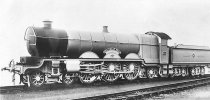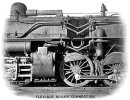Strathclyder
Established Member
I may or may not being opening a can of worms here...
I've been on something of a prototype locomotive kick these last few weeks and I'd thought I'd turn it into a subject for this sub-section of the forum (in my usual haphazard manner of course lol) and I'll be centering it around these two queries:
1) Which prototype, in your view, had the most potential from the outset that ended up being a one-off for any number of reasons?
2) Which prototype was, in your opinion, the most fascinating concept-wise, regardless of the practical/technical shortcomings it had in practice?
Am not limiting this thread to prototypes that worked on the UK mainland network, so the likes of CIÉ's CC1 are more than welcome.
My picks for #1 would be a tie between Kestrel & 89001 and #2 a three-way tie between CC1, 10100 & GT3.
Over to you all. This should prove to be a interesting discussion to say the least.
I've been on something of a prototype locomotive kick these last few weeks and I'd thought I'd turn it into a subject for this sub-section of the forum (in my usual haphazard manner of course lol) and I'll be centering it around these two queries:
1) Which prototype, in your view, had the most potential from the outset that ended up being a one-off for any number of reasons?
2) Which prototype was, in your opinion, the most fascinating concept-wise, regardless of the practical/technical shortcomings it had in practice?
Am not limiting this thread to prototypes that worked on the UK mainland network, so the likes of CIÉ's CC1 are more than welcome.
My picks for #1 would be a tie between Kestrel & 89001 and #2 a three-way tie between CC1, 10100 & GT3.
Over to you all. This should prove to be a interesting discussion to say the least.


